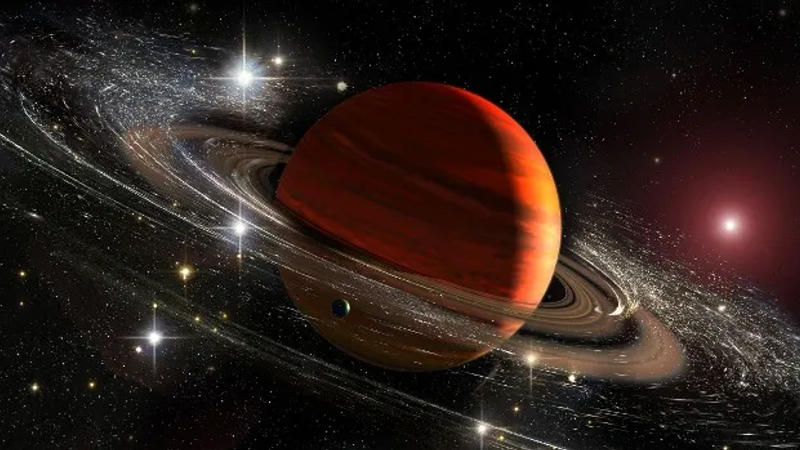
Washington: Renowned for its stunning ring system, Saturn, the sixth planet from the Sun, consists of billions of icy particles and tiny rock fragments. This spectacular feature has fascinated astronomers and space enthusiasts alike for centuries due to its immense scale and beauty. However, in 2025, these rings will become invisible from Earth. According to Earth.com, Saturn won’t actually lose its rings, but they will be obscured from our view.
Saturn’s Rings To Disappear?
According to Earth.com, Saturn won’t actually lose its rings, but they will be obscured from our view. It all has to do with planetary alignment. The phenomenon happens because the planet rotates on an axis tilted by 26.7 degrees, and the view of its rings from Earth changes with time. As the planet’s axis tilts in its unique way, the rings will slenderly align, edge-on to our viewpoint, hiding them from our sight.
To grasp this better, imagine Saturn’s rings as a sheet of paper viewed from the side. Just as the paper’s surface becomes nearly invisible when seen edge-on, Saturn’s rings will be much less visible during this alignment, though they won’t completely disappear.
Fortunately, this phenomenon is temporary and occurs every 29.5 years as Saturn orbits the Sun. The rings will be obscured from view until March 2025, and then again in November 2025, due to Saturn’s axial tilt. They will become fully visible again by 2032. According to Vahe Peroomian, a professor of physics and astronomy at the University of Southern California, Earth experiences Saturn’s rings edge-on roughly every 13 to 15 years, making them appear to reflect very little light and thus very difficult to see. The last time this occurred was in 2009, and the next edge-on view will be on March 23, 2025.
Saturn’s Moons
Saturn has at least 83 confirmed moons, with Titan being the largest and most notable. Titan is larger than Mercury and has a thick atmosphere composed mostly of nitrogen, with traces of methane and hydrogen. It is known for its potential to harbor prebiotic conditions.
Exploration to Saturn
Saturn has been visited by several spacecraft, including NASA’s Pioneer 11, Voyager 1 and 2, and the Cassini-Huygens mission, which provided detailed information about the planet, its rings, and its moons from 2004 to 2017.
